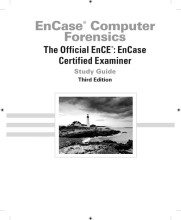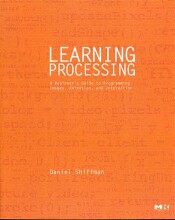Windows Operating System Artifacts - Review Questions
19 important questions on Windows Operating System Artifacts - Review Questions
1. An operating system artifact can be defined as which of the following?
A. Information specific to a user’s preference
B. Information about the computer’s general settings
C. Information stored about a user’s activities on the computer
D. Information used to simplify a user’s experience
E. All of the above
2. A FAT file system stores date and time stamps in _______ , whereas the NTFS file system stores date and time stamps in _______ .
A. DOS directory, local time
B. Zulu time, GMT
C. Local time, GMT
D. SYSTEM.DAT, NTUSER.DAT
C. A FAT file system stores data and time stamps in local time while the NTFS file system stores date and time stamps in GMT.
3. Where does Windows store the time zone offset?
A. BIOS
B. Registry
C. INFO2 file
D. DOS directory or MFT
- Higher grades + faster learning
- Never study anything twice
- 100% sure, 100% understanding
4.In Windows 7, the date and time of when a file was sent to the Recycle Bin can be found
where?
A. INFO2 file
B. Original filename’s last access date
C. DOS directory
D. $I index file
5. When a text file is sent a pre–Windows Vista Recycle Bin, Windows changes the short filename of the deleted file to DC0.txt in the Recycle Bin. Select the best choice that explains the deleted filename.
A. D=DOS, C=character, 0=index number, file extension remains the same
B. D=DOS, C=drive letter, 0=index number, file extension remains the same
C. D=deleted, C=character, 0=index number, file extension remains the same
D. D=deleted, C=drive letter, 0=index number, file extension remains the same
6. When a document is opened, a link file bearing the document’s filename is created in the ____________ folder.
A. Shortcut
B. Recent
C. Temp
D. History
7. Link files are shortcuts or pointers to actual items. These actual items can be what?
A. Programs
B. Documents
C. Folders
D. Devices
E. All of the above
8. In NTFS, information unique to a specific user is stored in the ____________ file.
A. USER.DAT
B. NTUSER.DAT
C. SYSTEM.DAT
D. None of the above
B. In NTFS, information unique to a specific user is stored in the NTUSER.DAT file.
9. In Windows XP, Windows Vista, or Window 7, by default, how many recently opened
documents are displayed in the My Recent Documents or Recent Items folder?
A. 4
B. 12
C. 15
D. Unlimited
C. By default, the My Recent Documents folder displays 15 recently opened documents; however, the actual folder may contain hundreds more.
10. Most of a user’s desktop items on a Windows 7 operating system would be located in the________________________ directory.
A. C:WINDOWSDesktop
B. C:WinNTDesktop
C. C:WINDOWSSystem32configDesktop
D. C:Users%User%Desktop
11. Because this file will hold the contents of RAM when the machine is powered off, the ____________ file will be the approximate size of the system RAM and will be in the root directory.
A. hiberfil.sys
B. WIN386.SWP
C. PAGEFILE.SYS
D. NTUSER.DAT
A. When the system goes into hibernation, the contents of RAM are written to the file hiberfil.sys which is the exact size of RAM and located in the root of the system drive.
12. Where can you find evidence of web-based email such as from MSN Hotmail or Google Gmail on a Windows system?
A. In Temporary Internet Files under Local Settings in the user’s profile
B. In Unallocated Clusters
C. In the pagefile.sys file
D. In the hiberfil.sys file
E. All of the above
E. Evidence of web-based email is commonly viewed by not saved. Therefore, its contents may be found in the Temporary Internet Files folder, Unallocated Clusters, or the pagefile.sys and hiberfil.sys folders.
13. Filenames with the .url extension that direct web browsers to a specific website are normally located in which folder?
A. Favorites folder
B. Cookies folder
C. Send To folder
D. History folder
A. The Favorites folder contains link files that direct the browser to certain websites. These link files usually have a name that describes the website followed with the .url extension.
14. Data about Internet cookies such as URL names, date and time stamps, and pointers to the actual location of the cookie is stored where?
A. INFO2 file
B. index.dat file
C. EMF file
D. pagefile.sys file
B. Information about an Internet cookie such as the URL name, date and time stamps, and pointers to the actual cookie are stored in the index.dat file.
15. On a Windows 98 machine, which folder is the swap or page file contained in?
A. WIN386.SWP
B. pagefile.sys
C. swapfile.sys
D. page.swp
A. The swap file saved as WIN386.SWP in a Windows 98 machine and as pagefile.sys in Windows XP and newer.
16. When you are examining evidence that has been sent to a printer, which file contains an image of the actual print job?
A. The Enhanced Metafile (EMF)
B. The shadow file
C. The spool file
D. The RAW file
C. The .sp, or spool, file contains an image of what is sent to the printer to be printed.
17. The two modes for printing in Windows are ____________ and ____________ .
A. spooled, shadowed
B. spooled, direct
C. spooled, EM
D. EMF, RAW
19. The index.dat files are system files that store information about other files. They track date and time stamps, file locations, and name changes. Select the folder that does not contain an index.dat file.
A. Cookies
B. History
C. Recycle Bin
D. Temporary Internet Files
20. The Temporary Internet Files directory contains which of the following?
A. Web page files that are cached or saved for possible later reuse
B. An index.dat file that serves as a database for the management of the cached files
C. Web mail artifacts
D. All of the above
The question on the page originate from the summary of the following study material:
- A unique study and practice tool
- Never study anything twice again
- Get the grades you hope for
- 100% sure, 100% understanding






























